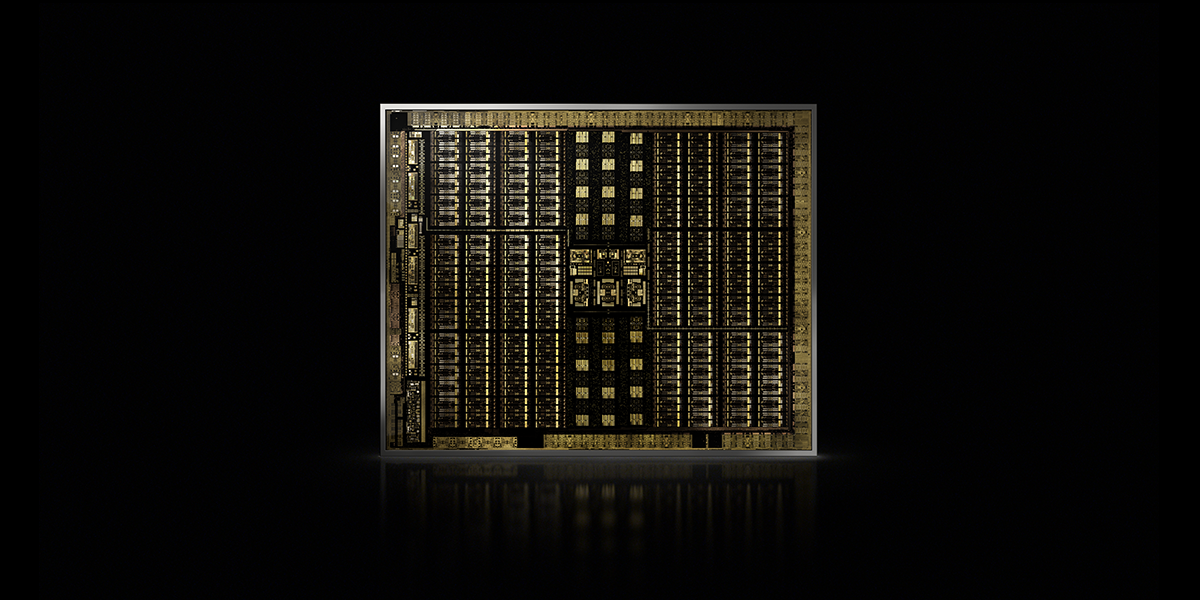
Nvidia dropped a bomb at SIGGRAPH last night, introducing its new Turing GPU architecture, a development the company touted as its “greatest leap” since it announced the CUDA platform back in 2006.
Turing GPUs will have two new hardware components — RT Cores, which accelerate real-time ray tracing, and Tensor Cores, which speed deep-learning training and inferencing. Together, Nvidia says, they make real-time ray-tracing possible.
The RT Cores can churn through ray-tracing performance at a staggering 25x faster than previous Pascal GPUs, Nvidia claims. That should lead to more interactivity between VFX artists and photorealistic iterations of their work, as well as to speedier rendering of VFX for film and television.
“Cinesite is proud to partner with Autodesk and Nvidia to bring Arnold to the GPU, but we never expected to see results this dramatic,” said Cinesite CTO Michele Sciolette in a prepared statement issued by Nvidia.
These capabilities are brought together by Nvidia’s RTX development platform, which supports ray-tracing APIs, including Microsoft’s DirectX Raytracing, Khronos’ Vulkan and Nvidia’s own OptiX, that have been optimized for Turing.
Applications enabled by the AI-accelerating Tensor Cores include advanced capabilities like anti-aliasing, denoising, scaling and retiming. For the last year, Nvidia has been demonstrating ways to dramatically improve the speed of ray-traced renders by using machine-learning techniques, but Tensor-derived tools may end up being of as much interest to effects-savvy editors as to VFX artists. Nvidia said the new NGX SDK, also part of the RTX platform, can be used by developers to incorporate enhanced image and video processing powered by deep learning into their applications.

Nvidia Quadro RTX 8000
Nvidia
The first products to incorporate the Turing technology will be three pro GPUs due beginning in the fourth quarter — the Quadro RTX 8000 with 48 GB of memory ($10,000 estimated street price (ESP)), Quadro RTX 6000 with 24 GB ($6,300 ESP), and Quadro RTX 5000 with 16 GB ($2,300 ESP). The cards are expected to ship with new workstations and servers from Dell, HP, HPE, Lenovo, Boxx, Fujitsu and Supermicro, Nvidia said.
The RTX 8000 and 5000 both have 4,608 CUDA cores and 576 Tensor Cores, enabling ray tracing at up to 10 GigaRays/sec, while the RTX 5000 has 3,072 CUDA cores and 384 Tensor Cores for up to 6 GigaRays/sec, Nvidia said. The cards will incorporate “new and enhanced” VR technology such as variable rate shading, multi-view rendering and VRWorks audio and represent the first implementation of 16 Gb GDDR6 memory from Samsung, supporting applications including 8K film production and post, the company said.
Nvidia also announced something called the RTX Server, powered by Quadro RTX 8000 GPUs, which works as a production rendering system with ray-traced global illumination for scenes of up to 96 GB. Nvidia compared a $2 million render farm with 240 dual 12-core Skylake CPU servers slurping 144 kW of power to a single $500,000 rack of four RTX eight-GPU servers sipping 13 kW. It’s scheduled for “early access” availability in the fourth quarter, with broader shipments to begin early next year.
This concept cinematic was created using real-time ray tracing techniques and Nvidia’s RTX technology.
This week’s SIGGRAPH announcements address mainly the development side of the industry, with the promise of making it faster and easier to visualize high-quality 3D environments during the creative process. For example, Porsche and Epic Games debuted “The Speed of Light,” a fully dynamic Porsche 911 Speedster concept cinematic made using Nvidia’s RTX technology and Unreal Engine. Porsche’s manager of virtual design, Christian Braun called it “proof that real-time technology is revolutionizing how we design and market our vehicles” in a prepared statement. The demo ran on two Nvidia Quadro RTX cards, and Epic said the dynamic global illumination and ray-traced lighting technology that made it possible will be built into future releases of Unreal Engine 4.
The other shoe is widely expected to drop next Monday, August 20, when Nvidia is set to introduce a new consumer-grade GPU for gamers at Gamescom. Consumer implementations of real-time ray tracing should eventually bring VR experiences to a new level of real-world fidelity.